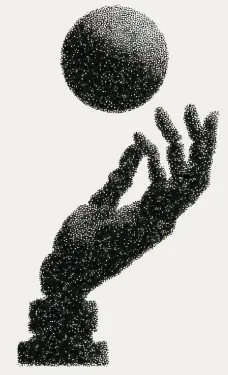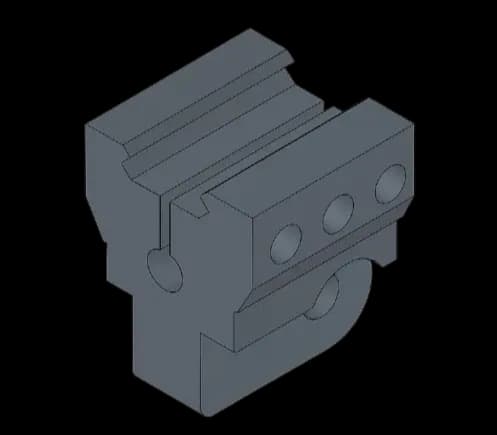
Introducing SGS-1
Spectral Labs releases SGS-1: the first generative model for structured CAD.
Today we are announcing SGS-1, a foundation model that can generate fully manufacturable and parametric 3D geometry. You can try a research preview of SGS-1 here.
Given an image or a 3D mesh, SGS-1 can generate CAD B-Rep parts in STEP format. Unlike all other existing generative models, SGS-1 outputs are accurate and can be edited easily in traditional CAD software.
 Overview of SGS-1 - users can provide an image or “dumb” 3D file, and get back a parametric B-Rep file that can be easily edited to match specific dimensions
Overview of SGS-1 - users can provide an image or “dumb” 3D file, and get back a parametric B-Rep file that can be easily edited to match specific dimensions
SGS-1 shows strong general results, producing much more complex and diverse CAD shapes than existing methods.
 Illustrative results from SGS-1
Illustrative results from SGS-1
SGS-1 can be used for real-world engineering tasks. In the below example, SGS-1 is used to design a bracket for a roller assembly from partial context and a text description (additional details below in Generating Parametric Geometry in Assembly Context section).
Results and comparing SGS-1 to prior models
We compare SGS-1 to SOTA multimodal reasoning LLMs and open-source image-to-CAD models: GPT-5 thinking, a large reasoning model by OpenAI that can produce CadQuery code to represent parametric geometry, and HoLa, a 205M parameter latent diffusion model with 181M parameter VAE that generate B-Rep geometry conditioned on a single input image. We develop a benchmark set of 75 images depicting medium to high complexity parametric geometry, sourced from CAD image renders of various styles, engineering sketches, and images generated by generative AI models. Model performance is evaluated by successful/failed creation of a single valid watertight solid that is an accurate representation of the input image using distance metrics (Success Ratio).
 Quantitative evaluations
Quantitative evaluations
We run each model 10 times and show scores for all 10 runs, as well as for the best output of the 10. Although GPT-5 and HoLa BRep can attain non-zero performance on the easiest images, SGS-1 is the best performing model with at least one success for all but the most complex objects.
Outputs from the SOTA large reasoning model (GPT-5) demonstrate a clear lack of spatial understanding, producing outputs that are unusable or too simple to actually be useful. We use both SGS-1 and GPT-5 to generate the parametric geometry for the rail mount from the input image, in order to produce the desired target complete assembly.



SGS-1 accurately represents the geometry and can be plugged into an assembly context, while the output from the large reasoning model is missing core spatial features.


Generating Parametric Geometry in Assembly Context
With SGS-1, you can create new parametric geometry within your current assembly context. In this example, SGS-1 takes in a partial CAD assembly and a text description/image of a bracket, and produces a 3D design for a bracket that is feasible for the context.
 First, render the partial assembly and come up with a text description of the parts you want to add. Next, run it through SGS-1, which will output a parametric B-Rep in the form of a downloadable STEP file
First, render the partial assembly and come up with a text description of the parts you want to add. Next, run it through SGS-1, which will output a parametric B-Rep in the form of a downloadable STEP file Finally, import the STEP file into your partial assembly and adjust dimensions until the part fits correctly into the assembly
Finally, import the STEP file into your partial assembly and adjust dimensions until the part fits correctly into the assembly
SGS-1 is capable of generating diverse designs for tasks like this - several bracket designs created by SGS-1 are shown below:
Converting Sketches and Engineering Drawings to B-Rep
SGS-1 can be used to convert simple freehand sketches and engineering drawings into geometry that you can work in in your CAD editor. In this example, we run sketches and drawings through SGS-1 to create parametric geometry.
 Use SGS-1 to transform sketches and drawings into 3D CAD files
Use SGS-1 to transform sketches and drawings into 3D CAD files
This works well on simple hand sketches, enabling powerful design workflows.

This also works on structured engineering drawings.

Automating Reverse Engineering and STL to STEP File Conversion
SGS-1 can be used to convert scans and standalone STL or other mesh files to parametric STEP files without any human input, automating reverse engineering of many shapes.
 Use SGS-1 to convert dumb 3D representations to parametric geometry
Use SGS-1 to convert dumb 3D representations to parametric geometry

Limitations
SGS-1 is designed to generate parametric 3D geometry for engineering use cases, and struggles when tasked with generating creative assets and organic shapes with complex curvature. In addition, SGS-1 has a limited 3D resolution and struggles with generating very thin structures. Finally, SGS-1 cannot create full assemblies in one shot. We plan to address these limitations with our next model generation.

Next Steps
SGS-1 represents a significant step forward for foundation models that can generate 3D geometry for engineering tasks. We plan to continue pushing forward the frontier, by training models that can engineer physical systems of increasing complexity. The next generation of models will be natively multimodal, support larger and more complex spatial context, and will be capable of performing more advanced physical reasoning through longer range planning. As we continue to scale up these models, we are excited about scaling up reinforcement learning using physical simulation feedback, which will unlock new physical reasoning capabilities for our models.
If you are interested in deploying SGS-1 or collaborating on research, please contact us through this form.
We are also hiring! Our team is composed of top AI researchers and engineers with previous experience at institutions such as Autodesk Research, Samsung Research, CMU, and Meta. If you're interested in our work and mission, please get in touch.